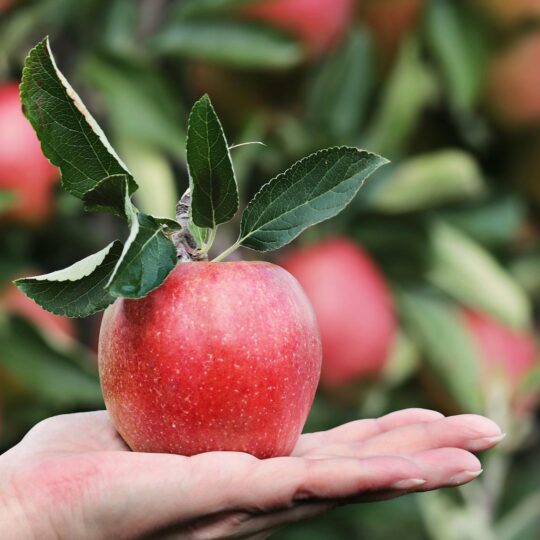 \
\Apples are mostly grown in three parts of Oregon: in the Willamette Valley, along the Columbia River near Hood River, and near Milton-Freewater. Nearly 1,500 farms in Oregon grow apples. Those farms grew 155 million pounds of apples in 2021. They were grown on 5,000 acres of land. Apples ranked number 19 on the list of Oregon’s top commodities in 2020. All the apples that year were worth 66 million dollars.1
Apples were brought to Oregon by Henderson Luelling. He was a pioneer and came west from Iowa on the Oregon trail in 1847. His wagon was packed with his family and many fruit trees – apples, pears, plums, and more. A man named William Meek also came with Henderson.
Those trees were planted in an orchard in the town now named Milwaukie. Henderson and William Meek started a nursery next to the orchard. They grew more fruit trees and sold them. Some of the trees were grown using grafting. William also brought apple seeds with him.
Many orchards were planted from the trees grown and sold by Henderson and William. They grew the Oregon apple industry from the beginning.2

Fuji apples are very sweet and crisp. They are popular for eating fresh and using in baked goods. Fuji apples also make good salads and apple sauce. This variety was created in Japan by crossing Red Delicious apples with Ralls Janet apples. They have been sold since 1962. Fujis become ripe in late summer.

Gala apples are sweet, but not as sweet as Fujis. These apples are reddish pink with a yellow background. They are good to snack on or use in baking and apple sauce. Unlike some varieties, Gala apples don’t freeze well. These apples came from New Zealand. They are a cross of Golden Delicious and Kidd’s Orange apples. They started to be sold in 1965. Gala apples get ripe around August.
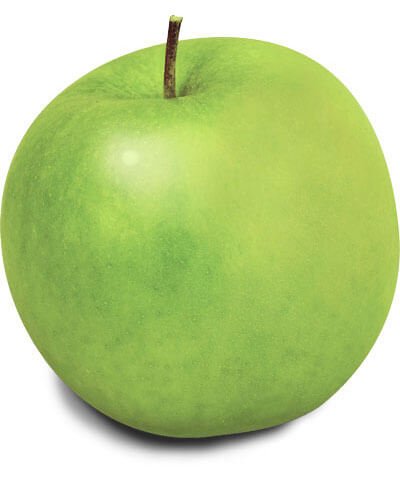
Granny Smith apples are tart, which is a similar word to sour. They are very crunchy apples. Granny Smith apples are a bright green color. Even though they aren’t sweet, they are a very popular apple. Many people use Granny Smiths for baking pies. They also make good applesauce and freeze well. They are from Australia and have been around since the 1860s. Granny Smith apples might be descended from French crab apples. They are usually ripe in August.
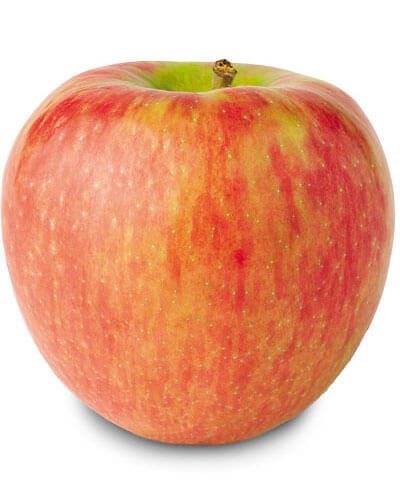
Honeycrisp apples are sweet and crisp, just like the name says. They are usually red with patches of green. They are very popular to snack on. They can also be used in baking, on salads, and used for sauce. These apples freeze well too. Honeycrisp apples are a newer variety than many others we eat. They started being sold in 1991. They were created in Minnesota. Honeycrisps come from Keepsake apples and a variety that isn’t known. They become ripe in early fall, usually September.
Growing an apple from a seed takes a long time. Rootstock is planted instead of seeds. A scion is grafted onto the rootstock. This combines the trunk and roots of one tree with a bud from another tree. This new tree will grow fruit much faster than a seed would.
Bloom and Pollination
Apple trees are dormant during the winter, like many plants. This means they rest. They come out of dormancy in the spring. Branches have buds that grow into leaves and flower blooms in the spring. The blooms will grow into apples. But first, they have to get pollinated.
Apple trees are pollinated by bees. Pollenizer varieties are planted through the orchard so they can cross pollinate the other trees. The apple flowers smell good and have nectar. The bees visit the flowers to collect nectar. When they leave that flower, they have pollen on them. The pollen goes to the next flower they land on. This is how pollination happens.3 Apple farmers usually have 1-2 bee hives per acre.
Flowers can grow into apples once they are pollinated. Part of the flower grows into seeds. Another part of the flower grows into the edible apple. The apples will grow bigger during the summer and be harvested during the late summer and fall.4
Apple harvest is usually in September and October. Sometimes it can be earlier in August. Some varieties become ripe earlier than others. The amount of warm weather each year can impact harvest time.
Apples have been picked by hand for a long time. This takes many people. Workers climb ladders and pick ripe fruit. They move the ladder from tree to tree. They usually put the apples in a bucket or bag. Then they put the apples in boxes through the orchard to be collected. This is hard work and finding workers can be tough. Some farmers try different ways to harvest.
One way is for workers to stand on platforms. The platforms drive down the rows and workers pick the apples as they pass them. They are high enough to not need ladders. Another way is to shake the apples out of trees with a machine. The apples fall into a net and are collected. This is faster, but some apples might not be ripe. Each year farmers try to make harvest better and easier on workers.5
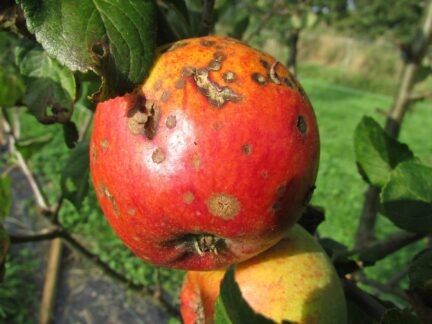
Apple scab mostly infects apples during the spring and early summer. It spends the winter on leaves or fruit on the ground. In the spring, moisture and higher temperatures can make it spread. Scab can infect the apple blooms and damage the fruit that comes from those blooms. Infected apples look like they have scabs. The scabs are raised and round, with brown or black spots. The fruit will sometimes break open from the scabs. Infected leaves can curl and fall off the tree.6
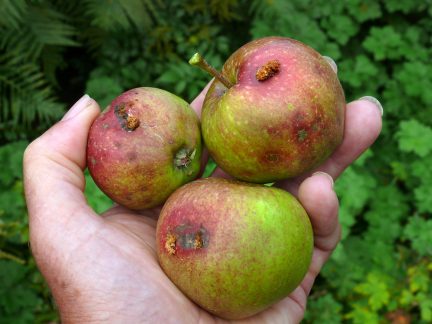
Codling moth is the most serious pest that ruins apples in the Pacific Northwest. The larvae dig into the apple and eat the inside. As they eat, they push frass out of the hole they entered through. Frass is the waste the pest produces. Apples that larvae eat can drop off the tree before they are ripe. Preventing moths from laying eggs is the best way to protect apple trees from codling moth.7
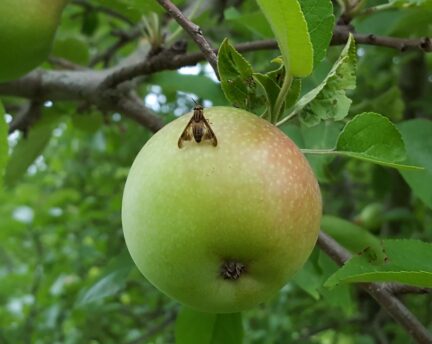
Apple maggot flies lay eggs under the skin of an apple. Larvae hatch from the eggs and tunnel through the apple. The tunnels look brown and uneven and get bigger as the larvae grows. The tunnel openings let diseases into the apple and can cause rot. The damaged apples may fall off the tree. The adult flies eat the honeydew created by aphids.8
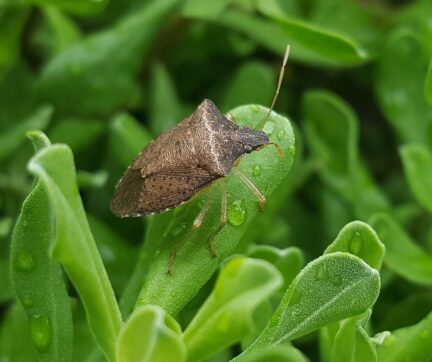
Stink bugs are shaped like they have a shield on their back. Stink bugs get their name because they give off a disgusting smell when they are alarmed. They suck sap from the plant and cause damage. The damage can be to all parts of the fruit – stems, leaves, buds, and the apple itself. Sometimes the damage isn’t obvious until the apples are harvested and in storage.9
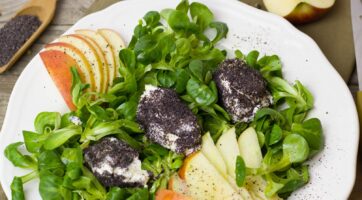

Using two plants to create a new plant with characteristics from both plants.
Pollen from one variety going to a different variety of the same type of tree.
In a state of rest that is similar to sleep.
Waste created by an insect as it bores through the apple.
Connecting two different plants together to form one plant.
An area of land that is used for growing fruit or nut trees.
A substance used to prevent or kill insects, diseases, and other pests.
A tree variety that makes pollen to pollinate other trees in the orchard.
The root system of a plant that is grafted to the upper section of a different plant.
The upper portion of a grafted plant with the leaves and buds to grow.
A type of plant that differs in characteristics from plants closely related.